- Home
- Joan Smith
Clouds of Deceit Page 2
Clouds of Deceit Read online
Page 2
Colonel Peter Lowe lives in Warminster, Wiltshire. In 1957, he was sent to Maralinga, in South Australia, to watch a series of weapon tests in order to lecture troops on the effects of nuclear weapons. He is one of the many British ex-servicemen who gave evidence in 1985 to the Australian Royal Commission investigating the British nuclear tests which took place on Australian territory. In terms of class and rank, his background and experience are utterly different from Ken McGinley’s, but in many other respects the two men have much in common. Both retain vivid memories of the tests, particularly of the lax attitude to safety and, like Ken McGinley, Peter Lowe believes that the tests he attended may have caused him lasting physical damage.
Lowe travelled to Sydney in 1957 on a BOAC flight via the Far East, before going on to Maralinga. There were about 200–300 other British army personnel at Maralinga at the time, including British army observers from the UK and all overseas commands - Germany, Middle and Far East, and Africa. All administrative support was provided by the Australian Army; there were also some personnel from the New Zealand army. Lowe was stationed at ‘11 Mile Camp’, eleven miles away from the detonation area. It was a tented camp and, according to Lowe, conditions there were ‘fairly primitive’.
Although he had been told that his stay might be as short as three weeks, he soon realized that it would be longer because of the delay caused by waiting for the weather to be correct for detonation. While waiting for the weather to change, the troops were given a series of lectures about the hazards of radiation and the mechanics of the atom bomb. Lowe found the lectures given by Sir William Penney, the scientist in charge of the tests, to be ‘extremely interesting and well presented’, but those of the other lecturers ‘tended to be too technical to understand or were badly put across’.
Penney told them that an excess of gamma radiation would be hazardous to their health, but that the organizers would ensure that there was no such excess exposure. He said that on the day after detonation, the servicemen would go into a contaminated area with full protective clothing, including a film badge, radiation monitor and gas mask. One man in each party would have a portable Geiger counter.
As part of their preparation for the explosion, Lowe and his colleagues spent the best part of three weeks ‘digging in’ a range of equipment - 25-pounder guns, machine guns and mortars – about two miles from ground zero (the point nearest the blast). They also erected field defences and radio aerials, and put out field telephones. The purpose of all this was to test the effects of the blast and heat on military equipment.
Lowe watched the first explosion from a hillside about five miles away from ground zero. The next day, he and the other troops went into the target area in groups of between six and eight. They were taken in a three-ton truck to the edge of the contaminated area, where they donned gas masks, boots and protective clothing, which they called ‘Noddy suits’. They then walked to the place where they had left the equipment before the explosion, to measure the effects of the blast on it.
As the senior officer in his group, Lowe was issued with a hand-held Geiger counter and briefly instructed as to how it worked, and how he would know when the danger level had been reached. He was told that when the needle went near the danger level, or the clicking of the counter became too fast, they should withdraw from the contaminated area at once.
‘After we left the three-ton truck, we walked towards ground zero,’ he recalled. ‘I cannot estimate how close to ground zero we went. We were not walking in a straight line because each of us had our own particular interest. Mine, as a gunner, was in the equipment of the Royal Artillery which I had helped to put out. We wandered around ever closer to ground zero until the Geiger counter I was holding registered what I considered a dangerous level.
‘If the dial on the Geiger counter was a semicircle, running from 9 o’clock to 3 o’clock, and the red line was at 12 o’clock, I would estimate we withdrew after the needle had gone past 11 o’clock. The other teams withdrew at roughly the same time.’ They went back to a meeting-point, from where they were taken to a decontamination camp run by the Australians.
Lowe was astonished by the insouciant attitude of the staff at the decontamination camp. ‘I remember vividly a burly Australian sergeant ripping my film badge from my lapel, taking one look at it, and throwing it into a bucket. I do not remember that the film badge had any number on it. If it did, I was certainly not present when it was issued to me by number, and the number recorded. I am equally certain that no record was made of the reading by the sergeant, and that the film badge was simply consigned to a bucket like everybody else’s. We then undressed and our protective clothing was taken away. I do not know what happened to it.’ The men then took a shower and, after being tested with a Geiger counter, dressed in their own clothes again.
Lowe observed the second blast from the inside of a closed down tank, which he found ‘very scary indeed’. He did not know exactly how far the tank was from ground zero, but it must have been reasonably close, since the blast moved the tank about ten feet sideways. ‘I was watching through a periscope, and the periscope went opaque straight away because of the sand-blasting effect, which ruined the optics.’ Lowe was wearing ordinary military gear for this exercise, with no film badge. After a ‘decent interval’ had elapsed after the blast, he was told to evacuate the tank and return by truck to 11 Mile Camp.
At the time, Peter Lowe was not aware that his exposure might have affected his health. It was not until 1969, when he was British military attaché in Washington DC, that his illness began. He seemed to have gastric problems, but all the medical tests he was given proved negative. When he returned from Washington he went to the Royal Hospital in Millbank, London. He told the doctors there that he didn’t feel well, but was simply told ‘not to make a fuss’.
In 1972, when he was military adviser to the British High Commission in Canberra, he had an internal haemorrhage. The doctor who examined him said that he had either a duodenal ulcer or cancer. Lowe’s tour of duty in Australia was cut short.
In 1973, when he had returned from Australia, Lowe went to a Harley Street specialist, who confirmed that he had a duodenal ulcer. Lowe persuaded him to operate to remove it. During the course of the operation, at the King Edward VII Hospital for Officers, the surgeon discovered that Lowe had a stomach tumour and immediately removed his whole stomach. Since then, Lowe has had no recurrence of his problem, but he is reviewed by the senior consultant at the Royal Marsden Hospital every six months.
The Ministry of Defence denied any liability for Lowe’s trouble. It even went so far as to tell the officers’ association, which was conducting Lowe’s application for a pension, that he was not present at the second explosion. ‘I am absolutely certain that I was,’ Lowe retorted, ‘and have a very vivid recollection of being stationed in the tank. I know that someone went sick at the last moment, and I took his place, and I believe that army records were never adjusted to take account of this.’
Colin Campbell was also sent to Maralinga. ‘I did not volunteer - they did not ask for any volunteers at my station,’ he told the Royal Commission. He was posted to Australia in 1956, at the age of 21. At the time, he was a senior aircraftsman stationed at RAF Edzell, in Scotland.
Campbell was told that he had been posted to Australia for ‘general duties’. Before he left, he was given a full positive vetting, so he realised that the work was, as he put it, ‘of a secret nature’. But beyond that he was kept in total ignorance. He knew nothing about Maralinga or atom bomb tests. He was given no warnings or lectures about radiation or other effects of the tests.
‘When we arrived at Maralinga’, he recalled, ‘the construction work had been finished. All three Australian services were there. I was in the Maralinga village camp. I remember the permanent buildings were the mess hall, cook houses, offices and station HQ. There were also mechanical workshops and a cinema.’
Campbell was on driving duties around the camp until the tests began. By
the time the first detonation was due to take place, everyone knew why they were there, but there were still no lectures on the effects of radiation. On 1 August 1956, Campbell was promoted to corporal. For all the tests except one, Campbell took part in parades on the airfield. For one of them, however, he was the driver of a Leyland 2,500-gallon fuel tanker, known as a Bowser. This is how he described the experience:
‘A Canberra aircraft which had flown through the atomic cloud landed to refuel. I drove the Bowser out to it and an aircraft handler connected the open-line fuel supply to the aircraft. I was wearing a pair of denim overalls and ordinary shoes. I had no gloves, no head cover, and while I may possibly have had a canvas face mask, like that of a surgeon, I had no eye covering.
‘I parked the Bowser between ten and fifteen feet from the aircraft while the refuelling took place. I stood at the rear of the Bowser, by the pumping controls. While I was doing this, I saw a man with a long probe, which he inserted into the sampling pod on the starboard wingtip, and pulled out the filter, which he put into a box. He was wearing the same as me. I know this, because if he had been wearing protective clothing and I wasn’t, I would have wondered why. When I had finished refuelling, I drove the Bowser back to the bulk depot to refill it. After this, I went through the decontamination unit, where I showered and was then tested with a Geiger counter. I was said to be acceptably clean externally.
‘I remember that the decontamination personnel used to tease the men by holding up a fluorescent watch near the counter, making it sound off, and then insisting that the personnel went through the showers again.’
In 1968, Campbell started to suffer from pulmonary fibrosis. According to Campbell, a doctor told him that it could have been caused by exposure to radiation. He told the Royal Commission that he had arranged to have a whole body scan at Harwell, but that this had then been refused on the grounds that staff there could not give him any result which could be used in proceedings against the government.
Britain’s very first atom bomb was detonated on board HMS Plym in the Monte Bello Islands, off the west coast of Australia, on 3 October 1952. The ship was vaporized in the blast. Graham Mabbutt, who is now a policeman in Devon, was an acting petty officer on HMS Zeebrugge at the time of the blast. Although Mabbutt never went ashore, he watched the explosion from the deck of his ship - and had a hair-raising experience on the journey home.
On the voyage out, however, Mabbutt and his colleagues were happily ignorant of the dangers to which they would be exposed. At the time his ship left England, the crew knew only that they were going on a top-secret mission. Once they had set sail for Australia, they were officially told that they were to witness the explosion of the first British atom bomb. During the voyage to Australia, the men were given just two short lectures, delivered by two scientists who had joined the boat at Southampton. These lectures, Mabbutt recalled, were largely devoted to an explanation of the nature of nuclear fission, rather than radiation and its health hazards. The men were told that they would wear a film badge around their waist from the time of the explosion onwards, but no one bothered to explain to them how the badge worked or how it was read.
When the ship reached the Monte Bello Islands, it was positioned between twelve and fifteen miles away from the lagoon where the bomb was to be exploded. The crew were gathered on the upper deck to witness the explosion. Soon afterwards, a helicopter from HMS Campania arrived with canisters of radioactive samples, which were winched down on to the Zeebrugge’s upper deck. Scientists then carried the canisters, which were not all that bulky, down to the laboratory on board the ship. According to Mabbutt, a large number of these canisters arrived in the hours immediately after the explosion. Over the next few days, there were further drops of canisters from helicopters.
This was not the only radioactive material which was being brought on to HMS Zeebrugge. The Royal Marines who were stationed on the ship were going ashore in landing and assault craft to pick up samples from ‘dirty areas’; these were taken to the ship’s lab for testing. When the Marines talked about their work, Mabbutt recalled, ‘they told me they would sometimes have their radiation instruments going off the scale, because they were too close to the dirty area, and had to retreat as fast as possible’.
Only a small proportion of the radioactive samples which came aboard was actually kept for laboratory analysis. The rest had to be disposed of - overboard. ‘I was told we were going to a particularly deep part of the ocean to do this,’ Mabbutt recalled. ‘The waste matter was in steel drums. I was in charge of winching the drums out of the tank space from the laboratory on to the upper deck, and then overboard. There were twenty to thirty drums in all, and to my certain knowledge six to eight of them were seeping badly. There was a problem in that the davit would not swing properly because it was too small, and the drum would catch in the scuppers. I then had to step forward and manually shove the drum clear of the ship’s side. I did this because I was in charge of the operation.
‘I remember getting splashed over the arms and legs by the seeping liquids from these drums. I can clearly remember a scientist who was observing these operations saying, when he saw me being splashed, “One day you may live to regret that.” This raised a laugh among the ratings present, as it was taken to mean that it might affect my ability to have children. Some of the drums were leaking so badly that the liquid was draining into the scuppers.’
There was always a scientist present when the drums went overboard, but when he observed the leaking he simply shrugged his shoulders, according to Mabbutt. Two or three of the drums failed to sink; again the scientist shrugged his shoulders. While this operation went on, the men were bare-armed, with sleeves rolled up.
Some of the landing and assault craft were too radioactive to be brought back to England, but others did make the journey -with consequences that gave Graham Mabbutt a nasty fright. ‘When we arrived back in Plymouth, there had been a flood disaster on the east coast of England. The Royal Marines on board were requested to help at the disaster at Canvey Island. Shortly after they had agreed to do so, they were told they could not take these remaining assault and landing craft, because they were radioactive. However, these same craft, which were secured on the upper deck and some in the tank space, were used as sleeping accommodation by many men. I myself slept in a wooden box in the tank space among the radioactive craft. The laboratory had been dismantled and winched back to the bulk-heads for the return voyage.’
Back in England, Mabbutt and the rest of the crew were set to work stripping paint off the bottom of the ship, chipping it off bit by bit. They were bare to the waist while doing this, even though, according to Mabbutt, ‘it was common knowledge that the whole of the hull of the ship was radioactive. The condenser for making fresh water from salt was radioactive, as were the bilges.’ After the Zeebrugge had been refitted, it was used as an accommodation ship for dockyard workers. Six months after he returned to England, Mabbutt began to suffer from psoriasis - a skin disease - on the forearms. He saw a consultant, who told him it was caused by nerves. Mabbutt was unconvinced. ‘I was then a boys’ instructor, with absolutely no stress at all.’ The consultant did not ask if Mabbutt had attended the Monte Bello test.
Morrie Westwood was also at the first British atom bomb test. He was an able seaman in the Australian navy, serving on board HMAS Koala. He watched the test from his ship, at a distance of thirty-nine miles. Soon after the explosion, however, the Koala sailed right into the immediate blast area to salvage a barge which had sunk just before the test. Sandy Brennan, a naval diver, went down to the sea-bed to attach lines to the barge, which was then hauled on to the forecastle of the Koala.
With the salvaged barge on deck, Koala tied up next to a British vessel which had a laboratory constructed on board. The diver, Brennan, went on board the British ship; while walking past the laboratory section, he started the Geiger counters ticking. He was found to be contaminated by radiation from the barge. Morrie Westwood and the rest of
ship’s company were then tested. They, too, turned out to be contaminated.
‘We were told to bathe - I had about six showers - until the scientists were satisfied that we were clean enough to return to the ship, leaving all our gear behind,’ Westwood recalled. ‘In my case, this was one pair of shorts and one pair of sandals, which were set in cement and dumped at sea. The barge was then hosed down and allowed to remain on deck for the duration of the journey. Dr Penney [chief scientist at the tests] came on board Koala and apologized to us for the incident. After a week or so, we headed for Fremantle, where the barge was offloaded and sent back to the UK. We were told not to mention the incident, but on arrival at Fremantle the wharf labourers declared the ship black.’
In 1957, while still in the navy, Westwood was admitted to a naval hospital with a stomach illness, the cause of which, he says, he was never told. After leaving the navy in 1958, he developed psoriasis. The condition was eased by various ointments, but it has never healed.
Clifford Henderson was posted to the Maralinga test site in 1957 as a cook; he was a corporal in the RAF catering branch. When he arrived at Maralinga, a Captain Brown of the Australian Army Catering Corps offered to take him on a tour of the sites where bombs had been detonated. They drove through a manned checkpoint to a bomb crater. As they stood on the edge and looked down into it, Captain Brown told Henderson: ‘We’ll go no further - it’s still hot.’ Then he added: ‘We’ve got to keep an eye open. Those abos [sic] like camping in these craters.’
Shortly after that, Henderson saw a family of aborigines at the police post at Maralinga. There were three of them - a man, woman and child - and they were wearing garments like loin-cloths. They were carrying spears and billy-cans. ‘They were in the company of a number of security personnel, who seemed quite busy with them,’ Henderson told the Royal Commission.

 A Kiss in the Dark
A Kiss in the Dark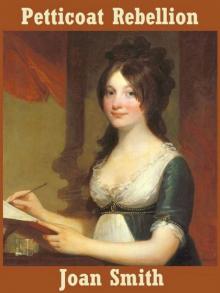 Petticoat Rebellion
Petticoat Rebellion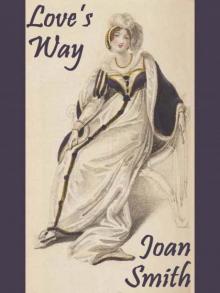 Love's Way
Love's Way Little Coquette
Little Coquette Memoirs of a Hoyden
Memoirs of a Hoyden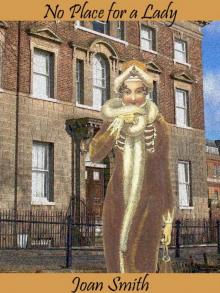 No Place for a Lady
No Place for a Lady Perdita
Perdita Talk of the Town
Talk of the Town The Hermit's Daughter
The Hermit's Daughter Moon Love
Moon Love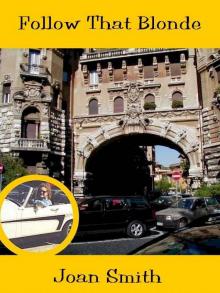 Follow That Blonde
Follow That Blonde A Highwayman Came Riding
A Highwayman Came Riding The Great Christmas Ball
The Great Christmas Ball Jennie Kissed Me
Jennie Kissed Me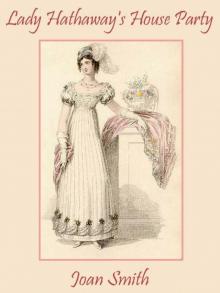 Lady Hathaway's House Party
Lady Hathaway's House Party Aunt Sophie's Diamonds
Aunt Sophie's Diamonds Sweet and Twenty
Sweet and Twenty Clouds of Deceit
Clouds of Deceit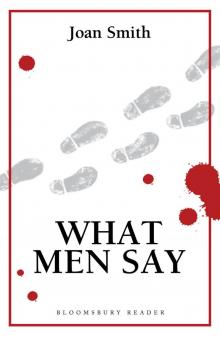 What Men Say
What Men Say The Devious Duchess
The Devious Duchess Tea and Scandal
Tea and Scandal Bath Scandal
Bath Scandal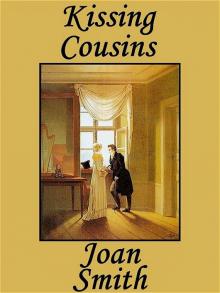 Kissing Cousins
Kissing Cousins Love's Harbinger
Love's Harbinger The Waltzing Widow/Smith
The Waltzing Widow/Smith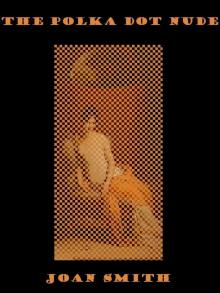 The Polka Dot Nude
The Polka Dot Nude Thick As Thieves
Thick As Thieves Murder on Ironmonger Lane
Murder on Ironmonger Lane Dame Durden's Daughter
Dame Durden's Daughter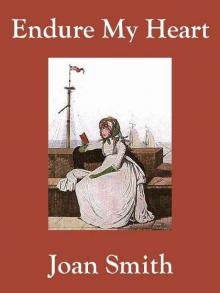 Endure My Heart
Endure My Heart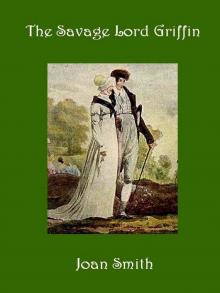 The Savage Lord Griffin
The Savage Lord Griffin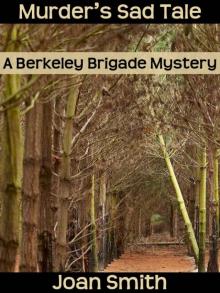 Murder's Sad Tale
Murder's Sad Tale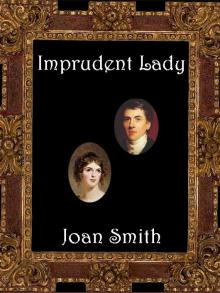 Imprudent Lady
Imprudent Lady It Takes a Lady
It Takes a Lady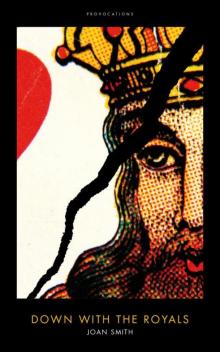 Down With the Royals
Down With the Royals Aurora
Aurora A Brush with Death
A Brush with Death The Black Diamond
The Black Diamond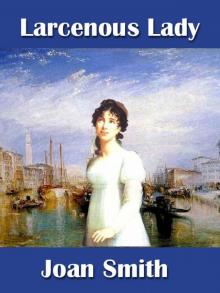 Larcenous Lady
Larcenous Lady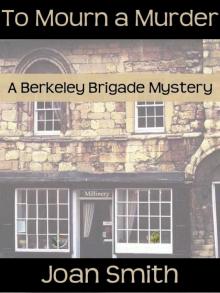 To Mourn a Murder
To Mourn a Murder Francesca
Francesca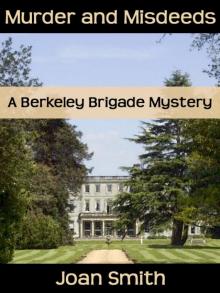 Murder and Misdeeds
Murder and Misdeeds A Country Wooing
A Country Wooing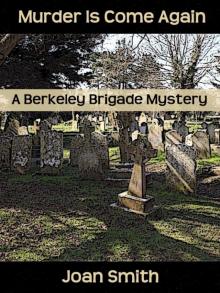 Murder Is Come Again
Murder Is Come Again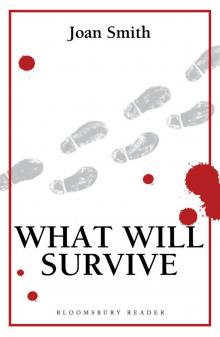 What Will Survive
What Will Survive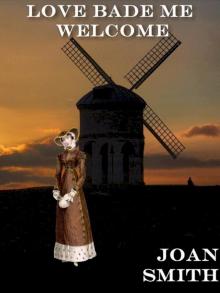 Love Bade Me Welcome
Love Bade Me Welcome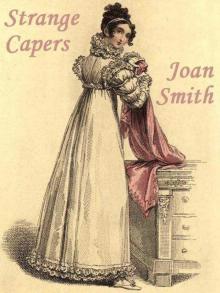 Strange Capers
Strange Capers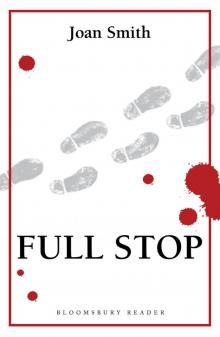 Full Stop
Full Stop Loretta Lawson 01 - A Masculine Ending
Loretta Lawson 01 - A Masculine Ending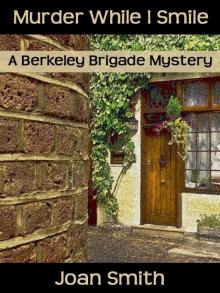 Murder While I Smile
Murder While I Smile Winter Wedding
Winter Wedding Capriccio
Capriccio Blossom Time
Blossom Time The Merry Month of May
The Merry Month of May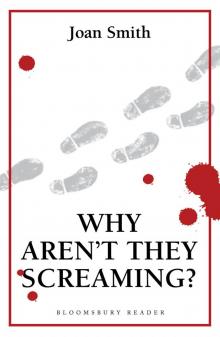 Why Aren't They Screaming?
Why Aren't They Screaming? Madcap Miss
Madcap Miss Delsie
Delsie Reluctant Bride
Reluctant Bride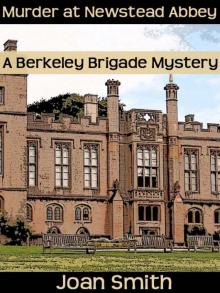 Murder at Newstead Abbey
Murder at Newstead Abbey A Tall Dark Stranger
A Tall Dark Stranger Letters to a Lady
Letters to a Lady Country Flirt
Country Flirt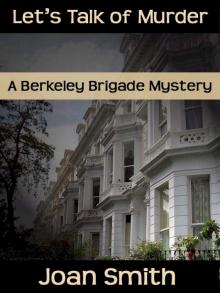 Let's Talk of Murder
Let's Talk of Murder Drury Lane Darling
Drury Lane Darling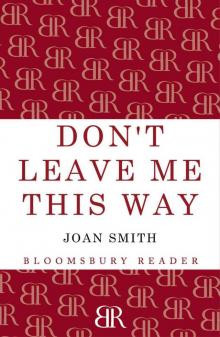 Loretta Lawson 03 - Don't Leave Me This Way
Loretta Lawson 03 - Don't Leave Me This Way Reprise
Reprise Lady Madeline's Folly
Lady Madeline's Folly Olivia
Olivia Midnight Masquerade
Midnight Masquerade Bath Belles
Bath Belles Lace for Milady
Lace for Milady Silken Secrets
Silken Secrets Minuet
Minuet Behold, a Mystery!
Behold, a Mystery! Babe
Babe The Notorious Lord Havergal
The Notorious Lord Havergal Romantic Rebel
Romantic Rebel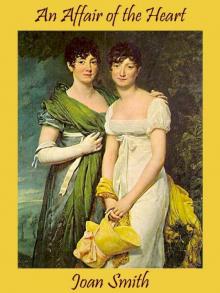 An Affair of the Heart
An Affair of the Heart Wiles of a Stranger
Wiles of a Stranger The Royal Scamp
The Royal Scamp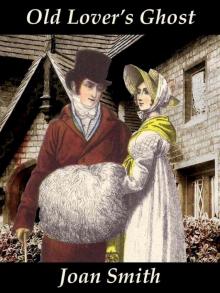 Old Lover's Ghost
Old Lover's Ghost The Virgin and the Unicorn
The Virgin and the Unicorn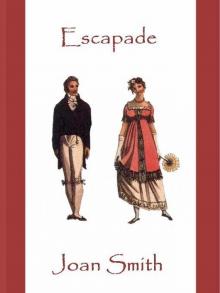 Escapade
Escapade A Christmas Gambol
A Christmas Gambol Cousin Cecilia
Cousin Cecilia Friends and Lovers
Friends and Lovers An Infamous Proposal
An Infamous Proposal Regency Masquerade
Regency Masquerade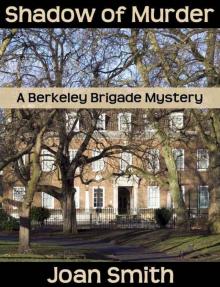 Shadow of Murder
Shadow of Murder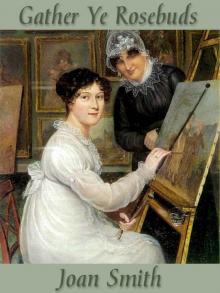 Gather Ye Rosebuds
Gather Ye Rosebuds Wife Errant
Wife Errant![[Berkeley Brigade 10] - Shadow of Murder Read online](http://i1.bookreadfree.com/i2/04/11/berkeley_brigade_10_-_shadow_of_murder_preview.jpg) [Berkeley Brigade 10] - Shadow of Murder
[Berkeley Brigade 10] - Shadow of Murder Dangerous Dalliance
Dangerous Dalliance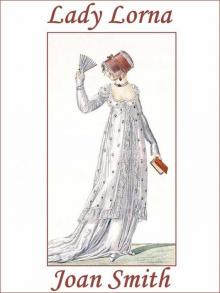 Lady Lorna
Lady Lorna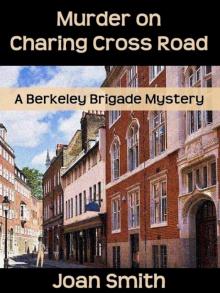 Murder on Charing Cross Road
Murder on Charing Cross Road Rose Trelawney
Rose Trelawney Prelude to Love
Prelude to Love The Spanish Lady
The Spanish Lady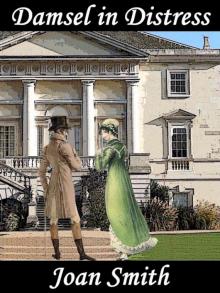 Damsel in Distress
Damsel in Distress Oh Miranda!
Oh Miranda! The Blue Diamond
The Blue Diamond